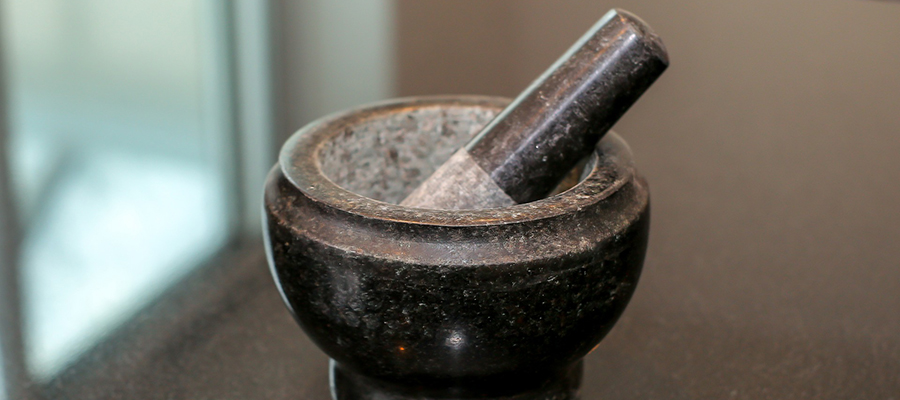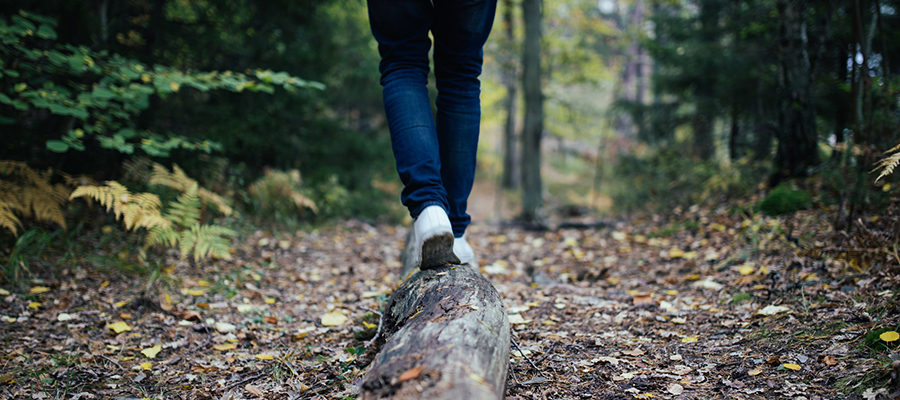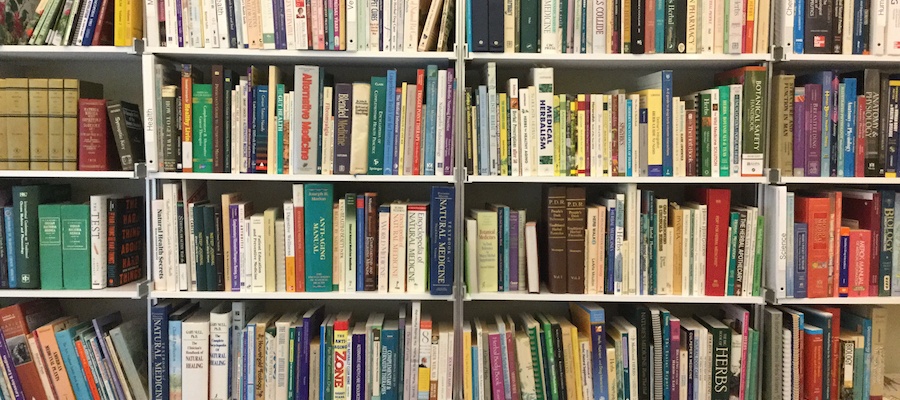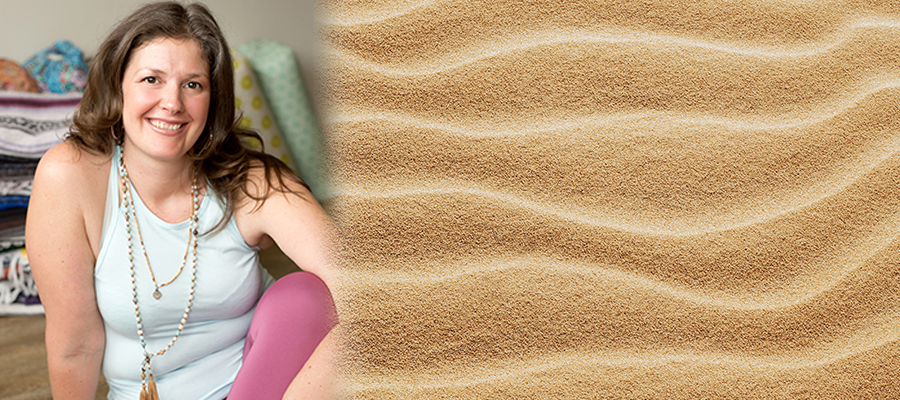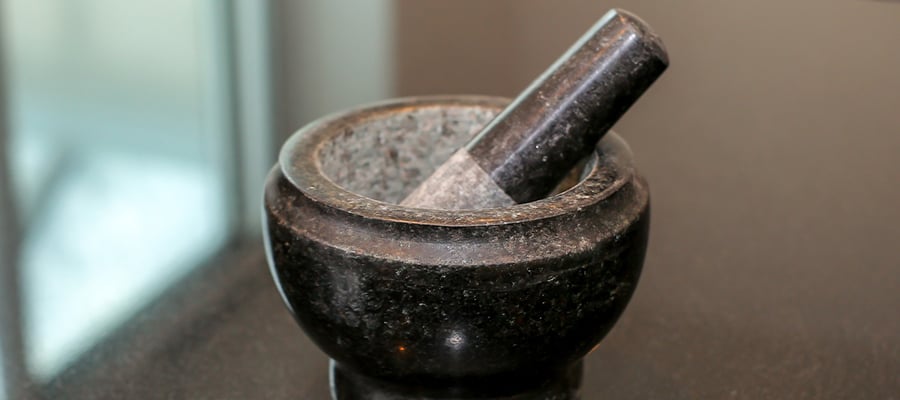 Image | pixabay.com
Image | pixabay.com
Mortar and Pestles were described in the Ebers papyrus from Ancient Egypt - dating back to 1550 BC. It is the oldest preserved piece of medical literature discovered. It is estimated that mortar and pestles were used for 6,000 years before this for food preparation.
The English word mortar derives from middle English morter, from old French mortier, from classical Latin mortarium, meaning, among several other usages, "receptacle for pounding" and "product of grinding or pounding". The classical Latin pistillum, meaning "pounder", led to English pestle- - mostly for the grinding of spices.
Traditional materials for mortar and pestle sets include stones like granite, marble, or agate. They're incredibly durable and nonporous, making it easy to remove the majority of the particles out of the mortar once you're finished grinding.
Pictured below is a Suribachi (grinding bowl) with surikogi (grinding stick). It is originally from China, where it was used to grind herbs. It is also used in Japan to make a condiment, gomasio, of sesame seeds, and salt. The suribachi is a common Japanese kitchen implement. This one is 5 ¾ inches on the inside with an unglazed inner grinding surface. Typically, blue or brown, they come in sizes up to 12’ across.
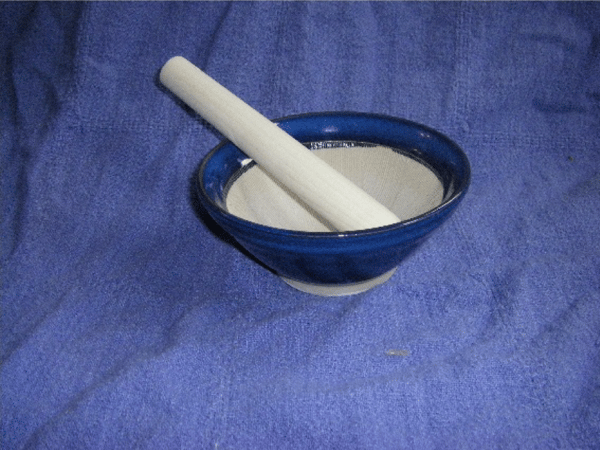
Suribachi (grinding bowl), with surikogi (grinding stick)
This is a Milton Brooke mortar and pestle pictured below is from Wade Ceramics in England, established in 1810! It is unglazed porcelain, with a porcelain pestle with beechwood handle. This one is 3 5/8 inches wide. It is made in six sizes. The unglazed ceramic is grippy, making it very good for grinding seeds.
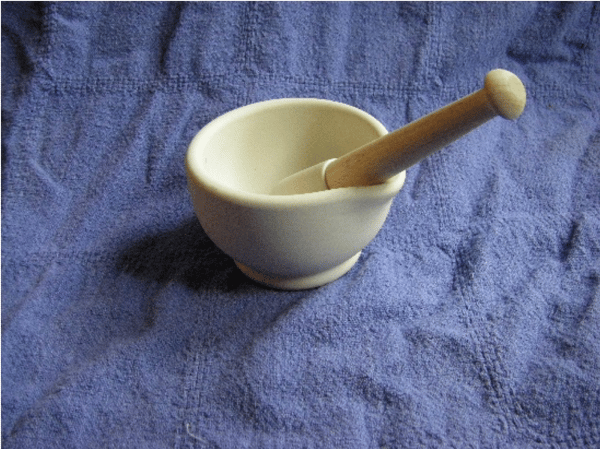
Milton Brooke mortar and pestle
This white grinding bowl is similar to a suribachi, but the bowl is a lot deeper. The interior surface is glazed. The pestle is a surikogi. This one is a hand-made object d’art. It is 6 ¾ inches wide. I like that it has a spout for pouring. The interior ridges are glazed.
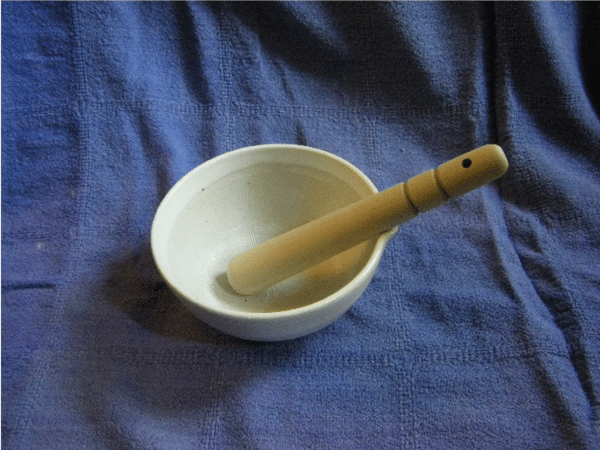
White grinding bowl with surikogi
This green granite mortar and pestle is made in Thailand. Found in an Asian grocery for $18! I have seen it other places for about $50. It is 5 inches wide on the inside and the bowl is 1 inch thick. This thing is very heavy. I have used it several times to make pesto. The pesto comes out a little “rustic” which I like.
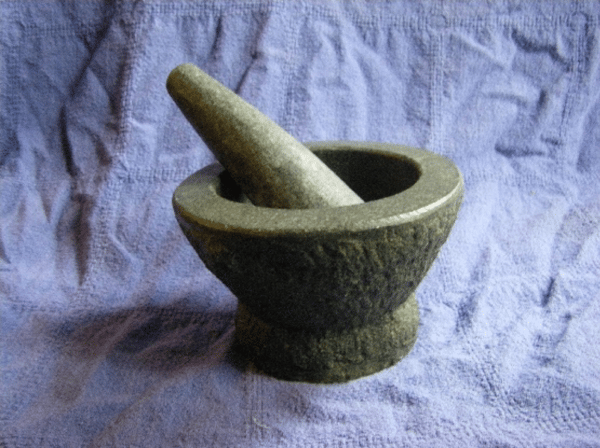
Green granite mortar and pestle from Thailand
I have used all of these to grind garlic and none on them retain any garlic or any other herbal aroma. I rinse them and scrub them out with a vegetable brush.
I use all of these often for culinary purposes and to process herbs for medicine. I could probably do without the larger white suribachi, but it was just too beautiful to pass up, and the deeper bowl is useful for larger amounts of herbs. I have collected these one by one over the years.
I love the Milton Brooke M & P because it is such a classic apothecary tool.
Granite and porcelain mortars and pestles are the most durable. It is important that the interior bowl is not too polished so that it has some texture to grip the herbs for grinding. Wood can be attractive, but is too porous. Wood will absorb oils and moisture, making it susceptible to mold and retaining flavors and odors.
These are by no means the only mortars and pestles available. But they are all classic examples used by cultures all around the world. A mortar and pestle will become indispensable once you find one (or more) that suit your needs.
Disclosure of Material Connection: I am a faculty member at the American College of Healthcare Sciences, the Institution that publishes this blog. However, all opinions are my own. This blog may contain affiliate links. I am disclosing this in accordance with the Federal Trade Commission’s 16 CFR, Part 255: “Guides Concerning the Use of Endorsements and Testimonials in Advertising.”
This article is for informational purposes only. It is not intended to treat, diagnose, cure, or prevent disease. This article has not been reviewed by the FDA. Always consult with your primary care physician or naturopathic doctor before making any significant changes to your health and wellness routine.
About American College of Healthcare Sciences
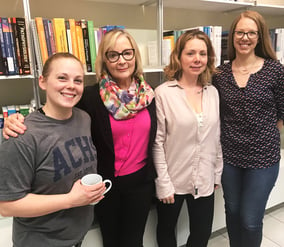 American College founded in 1978, is a fully online accredited institute of higher education specializing in holistic health. Based in Portland, OR; our goal is to make research-driven and science-based holistic health education taught by industry-leading experts accessible to anyone anywhere while still giving students a hands-on experiential learning experience like a traditional college and a strong sense of community, school pride and student bond.
American College founded in 1978, is a fully online accredited institute of higher education specializing in holistic health. Based in Portland, OR; our goal is to make research-driven and science-based holistic health education taught by industry-leading experts accessible to anyone anywhere while still giving students a hands-on experiential learning experience like a traditional college and a strong sense of community, school pride and student bond.
This commitment to our students and graduates reflects in our current survey results that reflect 98% of our students would recommend ACHS to a friend or family member.
We believe education is the most powerful tool for changing an individual and the world around us.
When a person enrolls as ACHS, it is vitally important that they graduate with tools they need to forge their own holistic and sustainable missions, build up their communities confidently and changing the face of healthcare with knowledge.

